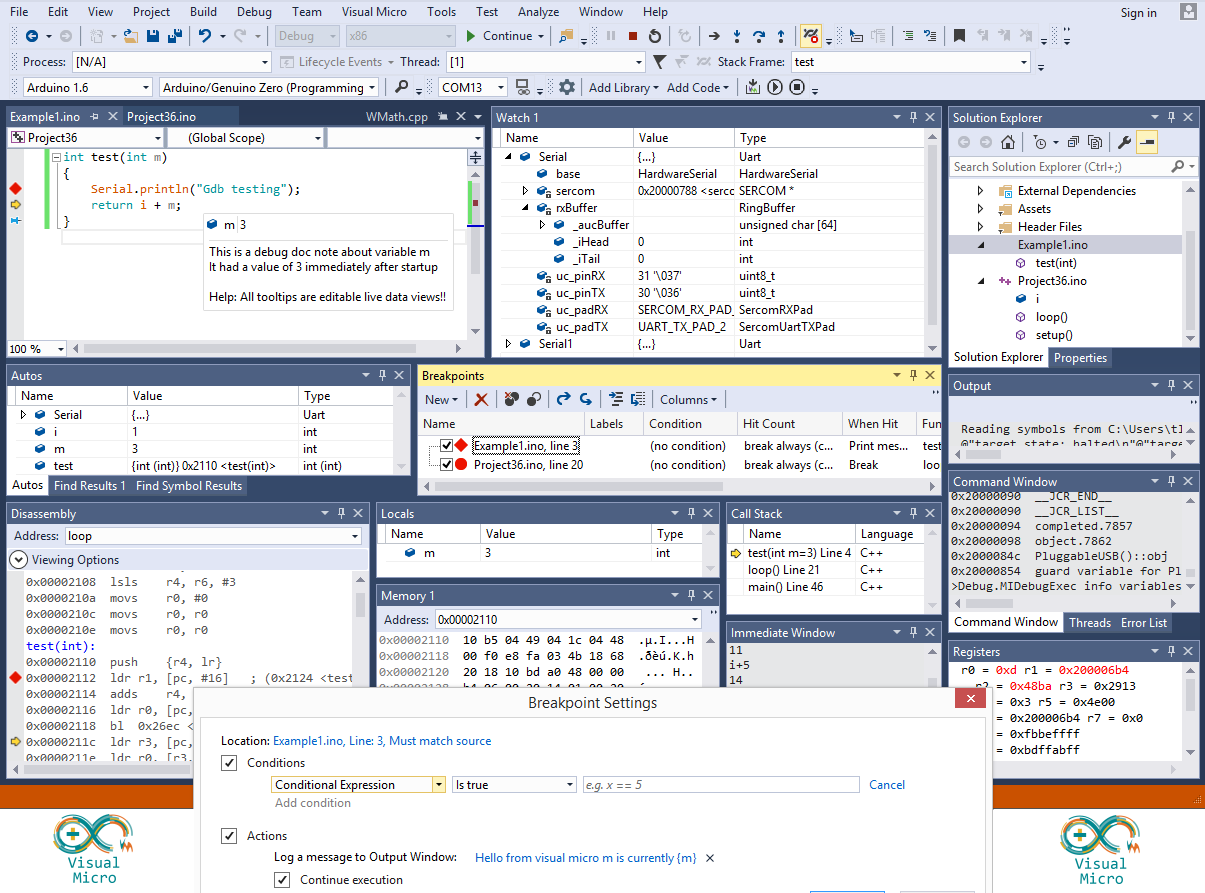

- GDB AND VISUAL MICRO TUTORIAL HOW TO
- GDB AND VISUAL MICRO TUTORIAL INSTALL
- GDB AND VISUAL MICRO TUTORIAL SERIAL
- GDB AND VISUAL MICRO TUTORIAL SOFTWARE
- GDB AND VISUAL MICRO TUTORIAL CODE
in libdaisy (and also some weird stuff in DaisySP). Visual Studio Project woes – I just merged a fix that fixes all of the missing files/references, etc. I think this will go a long way to creating a healthy developer ecosystem around the Daisy, which I sure is what you want. There are some guides in the forums but they are far from complete. I really really do suggest that you create some “official” guides for setting up both VSCode (including PIO) and VS/VGDB, and specifically getting debuggers working (I have a Segger EDU, which I have not been able to get working properly with the Daisy and either of the M$ IDEs). Love the Daisy, but I am getting a little frustrated with the poor state of your developer “onboarding”.
GDB AND VISUAL MICRO TUTORIAL SOFTWARE
I am a professional software engineer (though with no real embedded development experience), and I want to get on with building some cool apps for Daisy, NOT muck about trying to get the projects to build.
GDB AND VISUAL MICRO TUTORIAL INSTALL
I strongly encourage you to either get the examples in a state that developers can just clone them, install VGDB and get going, or create a “starter project”. I am getting “no input files” and multiple missing file errors when attempting to build libdaisy. Every time I seem to make progress I run into more issues. I have been struggling with the DaisyExamples for weeks trying to get it building in VS. I am super eager to get over the setup hump and into creating some digital instruments!

If anyone has gotten VSCode set up, either with PlatformIO or not, it would be great to get that documented too.
GDB AND VISUAL MICRO TUTORIAL HOW TO
Not even sure how to get console output from the device with VSCode. I am also using VSCode to get by, but having to treat the device as a black box is… well frustrating.

And then what about debugging? Does the Daisy include onboard debugging or do I need to use JTAG or similar? It would be great if you could create a guide to getting set up with VS and VGDB, given that it is probably the best toolchain out there.
GDB AND VISUAL MICRO TUTORIAL CODE
I looked at the repo comments and it looks like i2c support was removed but perhaps someone did not check in their config changes along with the code changes. I have set the file type prop to C/C++ Header, but no dice.

It looks like it is treating that file or something it depends on as a C file rather than a C++ file (causes “unknown type name ‘namespace’” error). I keep getting build errors related to per_i2c.h. Questions: which toolchain do I use the custom one documented in “getting started”, or will the regular ARM toolchain work? None of the samples will build with either, because the libdaisy build fails. Works on my Uno with a similiar platformio.I just cloned the repo and tried to build some of the samples with VS2019 and VGDB. (see Windows device manager).ĮDIT: In my test I had to say debug_port = \\.\COM14 when using COM14 so that GDB is happy.Īnd as code / src\main.cpp #include "Arduino.h"
GDB AND VISUAL MICRO TUTORIAL SERIAL
Whereas you have to replace SERIAL_PORT with the actual serial port name of the Mega on your computer, e.g. So you need to move your normal Serial output to another hardware serial ( Serial2?) on the Mega.Īs a start I’d suggest you debug just a blink sketch to verify the setup. Arduino Serial class) cannot be used in your program together with the debugger.


 0 kommentar(er)
0 kommentar(er)
